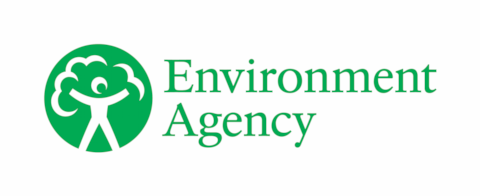South-east England water situation report: June 2025 summary
Updated 15 July 2025
Applies to England
1. Summary
June was the fourth consecutive month with below average rainfall, when only 63% of the long term average (LTA) rainfall was recorded. Over the last 3 months, Cotswolds West and Cherwell areal units (both Thames, THM) were the driest June on record. During a notable thunder storm over eastern Kent on 13 June, the highest daily total of 67.7mm was recorded at Dover rain gauge (Kent and South London, KSL). The soil moisture deficits (SMDs) continued their rise to record high levels for June. Ten areal units across the south-east recorded their second highest SMDs since 1976. Despite the ongoing low rainfall totals over the last few months, river flows in the Chalk rivers Ver and Mimram (Hertfordshire and North London, HNL) remained above normal and notably high respectively for June reflecting the continuing high groundwater levels. Flows at all the remaining indicator sites across the south-east were all at normal flows or lower for June. The expected steady decline of groundwater levels for this time of year continued during the month. Levels ranged from exceptionally low to notably high.
2. Rainfall
June was the fourth consecutive month with below average rainfall, when only 63% of the LTA rainfall was recorded. There were on average 21 ‘dry’ days when less than 0.2mm of rainfall was recorded. Over the last 3 months, Cotswolds West and Cherwell areal units (both THM) were the driest June on record and Cotswolds East, Berkshire Downs, Upper Thames and the Ock areal units (all THM) were the driest for June since 1976.
However, during a notable thunder storm over eastern Kent on 13 June, the highest daily total of 67.7mm was recorded at Dover raingauge (KSL). This was a high intensity event when 30mm was recorded in 15 minutes and 53mm of rainfall was recorded in just half an hour. This caused some flash flooding in Dover, Ramsgate and surrounding areas. Despite the high daily rainfall total in this small area, it only provided on average 10% of the monthly total. The combined rainfall totals from 5 to 7 June were wetter, when there was widespread rainfall, albeit less intense. On average, around 55% of the monthly total was recorded in these 3 days.
The high rainfall in KSL brought the average rainfall for the area in line with THM and Solent and South Downs (SSD). Hertfordshire and North London (HNL) received around a third less rainfall than the other 3 areas in the south-east.
3. Soil moisture deficit and recharge
The SMDs continued their rise to record high levels for June. Ten areal units across the south-east recorded their second highest SMDs since 1976. In addition, some units ended the month at the highest SMDs on record for June. They were:
- Cotswolds West (THM)
- Chilterns West (THM)
- Chilterns East (HNL)
- North Downs Hampshire (THM)
- Test Chalk (SSD)
- East Hampshire Chalk (SSD)
There were small falls in most of the SMDs in the first week after the rainfall recorded on the 5, 6 and 7 of June. This enabled some effective rainfall to occur, but it was very limited as is expected at this time of year.
4. River flows
Despite the continuing low rainfall totals over the last few months, river flows in the Chalk rivers Ver and Mimram (both HNL) remained above normal and notably high (respectively) for June reflecting the high groundwater levels in the Chilterns and Upper Lee Chalk. They both ended the month at the highest June flows since 2024, reflecting the last 3 wet winters. Flows at all the remaining indicator sites across the south-east were all at normal flows or lower for June. The Coln at Bibury (THM) and Arun at Alfoldean (SSD) were both at exceptionally low flows. Both these sites ended the month as the third lowest June flows on record after 2022 and 1995 respectively. Please note that a number of gauging stations have been impacted by weed growth due to the high temperatures and low rainfall that can affect the quality of data collected.
5. Groundwater levels
The expected steady decline of groundwater levels for this time of year continued during the month. Jackaments (THM) recorded exceptionally low levels as did Carisbrooke (SSD), that was the lowest June level on record (starting in 1977). Jackaments was the second lowest on record after 1976. By contrast, levels at Stonor Park (THM) and Lilley Bottom (HNL) both ended the month at notably high levels, reflecting the slower responding Chalk in the Chilterns (THM) and Upper Lee (HNL) respectively. Of the remaining 12 indicator sites across the south-east, 9 were at normal levels and 3 recorded below normal levels for June.
6. Reservoir stocks
Reservoir stocks have declined as expected, but Lower Lee (HNL) and Weir Wood (KSL) reservoirs remained above the LTA. Bough Beech and Powdermill (KSL) were right on the LTA for June and the remaining reservoirs were all below the LTA.
Author: groundwaterhydrology@environment-agency.gov.uk
All data are provisional and may be subject to revision. The views expressed in this document are not necessarily those of the Environment Agency. Its officers, servants or agents accept no liability for any loss or damage arising from the interpretation or use of the information, or reliance upon views contained in this report.

